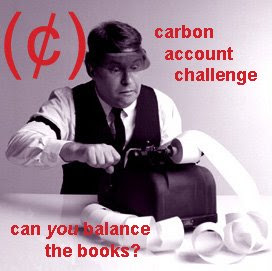Switching from chemical-filled cleaners to natural cleaners
Let me start by saying my house is FAR from the cleanest place on the block. The floors are covered with sticky lollipop residue and my dining room chairs look like they're wearing fuzzy slippers from all the dog fur that is glued to their feet. The toilets are constantly in need of scrubbing (did I mention I have a four-year-old son with bad aim?) and the mold growing in our shower has given the stall an art-deco, faux leopardskin, polka-dot kind of feel. I've dusted the house seven or eight times since we moved in and have somehow not yet gotten around to mopping the floors upstairs. Nonetheless, I sport a substantial collection of chemically-engineered cleaning products that promise to keep my home shiny and fresh.
Reading the labels on these containers would require a degree not only in chemistry but linguistics as well. I'm not sure exactly what dimethyl ethylbenzyl ammonium chloride is, but I'm pretty sure it isn't something that is found naturally occuring outside a laboratory. Plus, you've got to be somewhat concerned with any container that has WARNING written all over it and SAFE STORAGE AND DISPOSAL INSTRUCTIONS. Yikes.
According to worldwatch.org, cleaning products were responsible for nearly 10 percent of all toxic exposures reported to U.S. Poison Control Centers in 2000, accounting for 206,636 calls. Of these, nearly two-thirds involved children under six, who can swallow or spill cleaners stored or left open inside the home.
According to the U.S. Environmental Protection Agency, the air inside the typical home is on average 2-5 times more polluted than the air just outside—and in extreme cases 100 times more contaminated—largely because of household cleaners and pesticides.
And, in a 2002 U.S. Geological Survey study of contaminants in U.S. stream water, 69 percent of streams sampled contained persistent detergent metabolites, and 66 percent contained disinfectants.
Well, I've found a better way (and so have a lot of other people out there). I'm sure old timers will laugh when I talk about these revolutionary new cleaning products that include the likes of: white vinegar, borax, baking soda, lemon juice, soap and tea tree oil. Here are a few of the great new "recipes" I found online and am anxious to try out....
CREAMY SOFT SCRUBBER
Simply pour about 1/2 cup of baking soda into a bowl, and add enough liquid detergent to make a texture like frosting. Scoop the mixture onto a sponge, and wash the surface. This is the perfect recipe for cleaning the bathtub because it rinses easily and doesn’t leave grit.
WINDOW CLEANER
1/4 - 1/2 teaspoon liquid detergent
3 tablespoons vinegar
2 cups waterspray bottle
Put all the ingredients into a spray bottle, shake it up a bit, and use as you would a commercial brand.
ALL-PURPOSE SPRAY CLEANER
1/2 tsp. washing soda
a dab of liquid soap
2 cups hot tap water
Combine the ingredients in a spray bottle and shake until the washing soda has dissolved. Apply and wipe off with a sponge or rag.
FURNITURE POLISH
1/2 teaspoon oil, such as olive (or jojoba, a liquid wax)
1/4 cup vinegar or fresh lemon juice
Mix the ingredients in a glass jar. Dab a soft rag into the solution and wipe onto wood surfaces. Cover the glass jar and store indefinitely.
MOLD KILLER
2 teaspoons tea tree oil
2 cups water
Combine in a spray bottle, shake to blend, and spray on problem areas. Do not rinse. Note that the smell of tea tree oil is very strong, but it will dissipate in a few days.
I don't know if my house will be cleaner or not, afterall, I didn't find a recipe for a solution that will rub, scrub or squegee itself off. But if YOU find one, drop me a line!
Savings:
OK, here's the real embarrassing part. I'm wracking my brain trying to remember the last time I actually purchased a cleaning product. I *think* it was in October of 2006. So.... I guess, for me personally, it's not going to be a HUGE impact. But maybe for someone who keeps a cleaner home it would be. I sould say then, that I'm reducing my household chemical output by a whopping 12 ounces. Doesn't sound like much, does it? But what if just 10% of Americans (the ones who clean as infrequently as I do) did the same? Then we'd be looking at a savings of 22,585,496 POUNDS of chemicals. Care to join me now?
Difficulty Level: 3 out of 5
I'm going to have to hunt around my grocery store to find out where they keep the borax and vinegar (who buys vinegar unless it's Easter anyhow?). Then I'll just replace my cleaning caddy items as they get used up. Not too hard, not too easy. I'll probably test out the recipes and when I find one I like, I'll tape it to my caddy for easy reference. The hard part will be actually cleaning the house.
Monday, July 9, 2007
Day Fifteen - A Lean, Green Cleaning Machine
Subscribe to:
Post Comments (Atom)









2 comments:
Check the aisle they have the oil. In our grocery store it is in the baking/salad dressing aisle. Good luck and thanks for the recipes.
My family recently started going "green" and one of our favorite cleaning purchases was the Steamboy Steam Floor Mop. It destilled water, leaves no residue, and because it's steam it sanitizes AND gets off the really sticky kid goo that sticks to every surface imaginable. At $89 it has been the smartest cleaning buy we've made!
Post a Comment